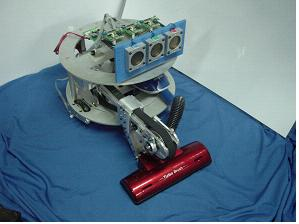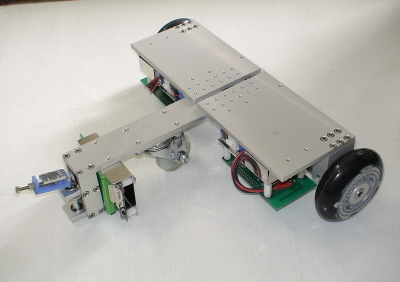Simultaneous Driving System of Ultrasonic Sensors
Ultrasonic sensors are widely used in mobile robot applications to recognize external environments by virtue that they are cheap, easy to use, and robust under varying lighting conditions. In most cases, a single ultrasonic sensor is used to measure the distance to an object based on time-of-flight (TOF) information, whereas multiple sensors are used to recognize the shape of an object, such as a corner, plane, or edge. However, the conventional sequential driving technique involves a long measurement time. This problem can be resolved by pulse coding of ultrasonic signals, which allows multi-sensors to be emitted simultaneously and adjacent objects to be distinguished. Accordingly, this study presents a new simultaneous coded driving system for an ultrasonic sensor array for object recognition in autonomous mobile robots. The proposed system is designed and implemented. A microcontroller unit is implemented using a DSP, Polaroid 6500 ranging modules are modified for firing the coded signals, and a 5-channel coded signal generating board is made using a FPGA. To verify the proposed method, experiments were conducted in an environment with overlapping signals, and the flight distances for each sensor were obtained from the received overlapping signals using correlations and conversion to a bipolar PCM-NRZ signal.

Steering-by-Tether and Modular Architecture for Human-Following Robot
Conventional human-following robots usually have complex a sensing mechanism, involving a camera, laser
range finder, and ultrasonic sensor in order to detect and follow a human. Thus, to simplify this mechanism, the present
paper proposes a new architecture for a human-following robot that includes a tether for the robot steering. The
proposed robot has a simple structure that consists of driving modules and a steering module. To communicate more
effectively, ZigBee wireless communication technology is also implemented.


Spherical Robot (KisBotⅠ)
A new type of spherical robot, called KisBot, is presented that includes arms and two types of driving mode: rolling and wheeling. In the rolling mode, the robot uses its arms as pendulums and works like a pendulum-driven robot, while in the wheeling mode, it extends its arms to the ground and works like a one-wheel car. The basic design idea of KisBot is introduced and a prototype is implemented. The robot has a wheel-shaped body between two rotating semi-spheres. Each semi-sphere contains one DC motor for propulsion in the rolling mode and wheeling mode, one RC motor for arm extension, a speed controller for changing the direction of the arm rotation, a battery as the power source, and the mechanical components of the arm. Experiments using the rolling mode and wheeling mode verify the driving efficiency of the proposed spherical robot.
Spherical Robot (KisBotⅡ)
Due to the limited pendulum motion range, the conventional one-pendulum driven spherical robot has limited driving capability. Especially it can not drive parallel direction with center horizontal axis to which pendulum is attached from stationary state. To overcome the limited driving capability of one-pendulum driven spherical robot, we introduce a spherical robot, called KisBot II, with a new type of curved two-pendulum driving mechanism. A cross-shape frame of the robot is located horizontally in the center of the robot. The main axis of the frame is connected to the outer shell, and each curved pendulum is connected to the end of the other axis of the frame respectively. The main axis and pendulums can rotate 360 degrees inside the sphere orthogonally without interfering with each other, also the two pendulums can rotate identically or independent of each other. Due to this driving mechanism, KisBot II has various motion generation abilities, including a fast steering, turning capability in place and during travelling, and four directions including forward, backward, left, and right from stationary status. Experiments for several motions verify the driving efficiency of the proposed spherical robot.

